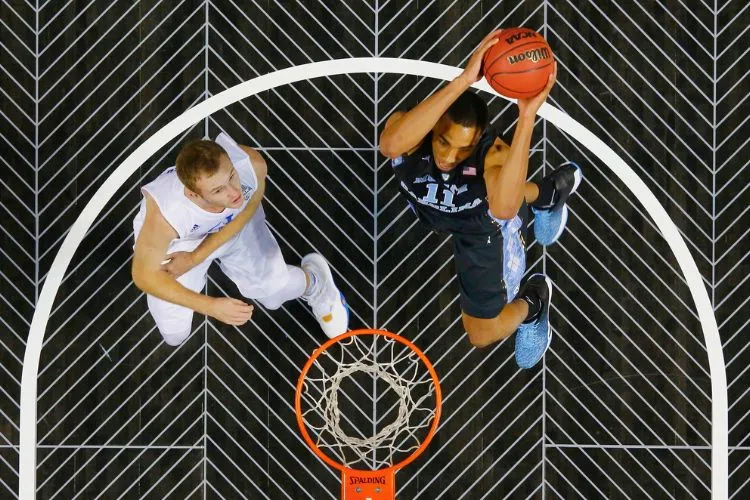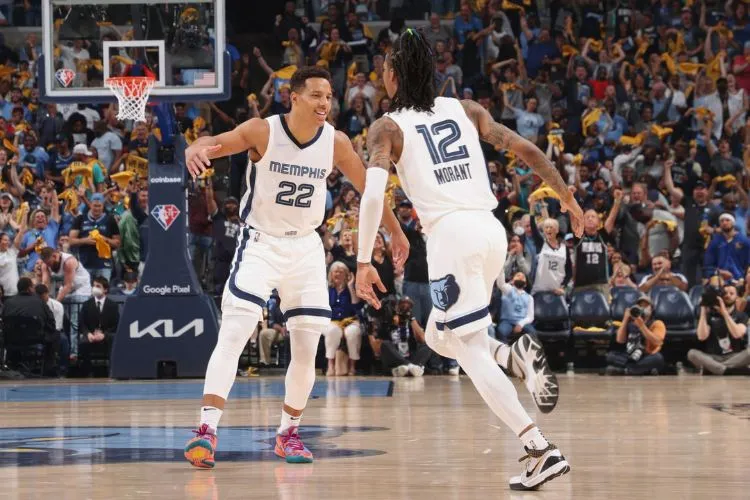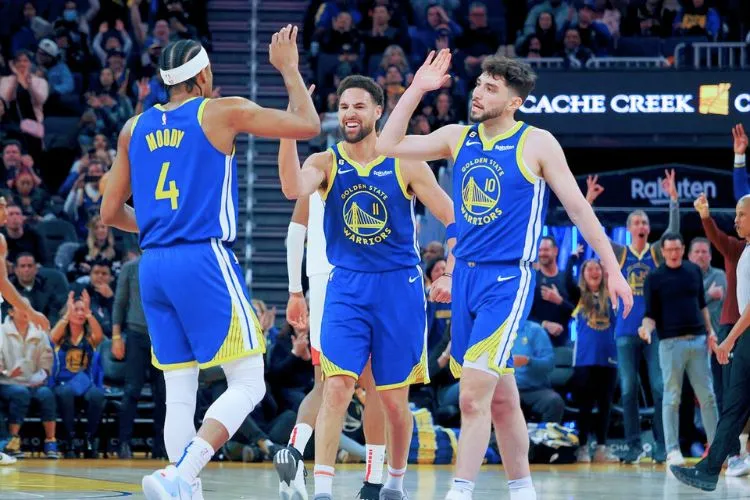The game of basketball, much like any sport, has had its share of strategic evolutions over the years, and Small Ball is one such revolutionizing strategy.
But, what is a small ball in basketball?
Well, this small ball tactic emphasizes speed, agility, shooting, and passing over conventional post-up strategies.

Viewed as an alternative to the traditional approach of having tall players dominate the paint, small ball introduces a new dynamic where smaller, more skillful players hold sway.
This article explores what ‘Small Ball’ basketball is all about its origin, application, and impact on the modern basketball landscape.
What is small ball in basketball?
Small Ball in basketball is a tactic or strategy where a team plays with a lineup of smaller, more agile players who may not necessarily be strong in traditional areas like height or physical prowess but possess exceptional skills in shooting and passing the ball.
The goal is to spread out the opposing defense, create mismatches and exploit them using quickness and superior shooting, particularly beyond the three-point line.
Small Ball lineups often include versatile players capable of playing multiple positions, which traditionally would require larger players. This tactic promotes a high-tempo, fluid style of play that emphasizes space creation and outside shooting.
It’s a shift from the traditional approach where taller, bigger players in the center or power forward positions were deployed to dominate the opponents in the paint area. The advent of the Small Ball in basketball has greatly revolutionized gameplay strategy in the modern era.
Why do NBA teams play small ball?
NBA teams play Small Ball for a versatile and dynamic gameplay approach. By playing smaller players who are more agile and skilled shooters, teams can push the pace, spread out the defending players, and exploit the resulting mismatches.
This style of play enables a high-tempo game, creates more open space on the court for drives, and increases opportunities for three-point shooting.

Additionally, the defensive versatility of multi-position players in a small ball lineup can be a significant advantage in disrupting the opposing team’s offense. Thus, despite some defensive sacrifices, Small Ball is seen as an effective strategy for gaining an offensive edge.
What team started small ball?
The Golden State Warriors are widely credited with popularizing the Small Ball revolution in the NBA under coach Steve Kerr. During the 2014-2015 season, the Warriors began frequently deploying lineups featuring smaller, more versatile players.

Their ‘Death Lineup’, featuring Steph Curry, Klay Thompson, Andre Iguodala, Harrison Barnes, and Draymond Green, exemplified small ball and led them to win the 2015, 2017, and 2018 NBA championships.
Opposite of small ball (basketball)
The opposite of Small Ball basketball, often called Traditional or Big Ball basketball, emphasizes size, power, physical dominance, and interior play. This strategy prefers “big” men, typically players above 6’10” in height occupying positions like Center or Power Forward.
The focus is on dominating ‘in the paint’, referring to the rectangular area below the basket.
In contrast to Small Ball’s fast-paced, perimeter-oriented game, Traditional Basketball focuses on slowdown offenses, post-ups, and higher percentage two-point shots close to the basket by big men. These big players often have the roles of shot-blockers, rebounders, and post scorers.
Defensively, Big Ball aims to limit opponents’ interior scoring opportunities by utilizing their size advantage and shot-blocking ability. They also aim to control the board, securing defensive rebounds to stifle opponents’ second-chance points and offensive rebounds to boost their own.
While the NBA has been moving towards a perimeter-oriented, faster-paced style of play (Small Ball), the Traditional or Big Ball strategy still holds relevance. Teams adept at it can use their size and strength to enforce a slower, controlled pace, thereby disrupting opponents structured around the Small Ball philosophy.
Conclusion:
The Small Ball strategy in basketball signifies a paradigm shift, emphasizing speed, agility, and versatility over traditional size-oriented gameplay. As we’ve explored, this approach has found its way into the strategy of many teams, profoundly shaping the modern game.
Originating with the Golden State Warriors and moving to other teams, the Small Ball approach demonstrates that basketball is not merely about size but also skill and clever tactics.
It has successfully introduced a new way to view the sport, emphasizing shooting range, pace, and space exploitation.
While it may seem like basketball is continually trending towards smaller lineups, it’s essential to remember that each strategy, including the contrasting Big Ball approach, has its unique place and effectiveness.
As fans and students of the sport, we can look forward to seeing how these tactics evolve and influence future basketball generations.
